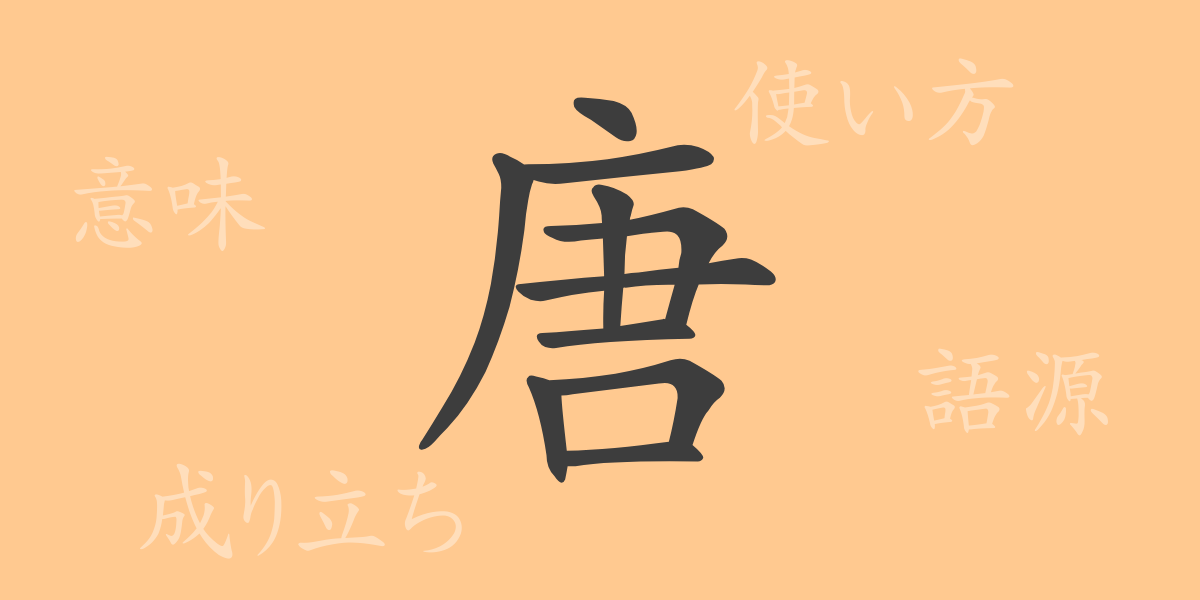Kanji, a single character, mirrors the depth of a nation’s culture and language. ‘唐 (とう)’, a common Kanji in Japanese, holds a special place in our language due to its unique shape and ancient history. This article delves into ‘唐’, exploring its origins, meanings, uses, and its role in Japanese language.
Origins of ‘唐 (とう)’
The Kanji ‘唐’ originates from the name of an ancient Chinese locale. Known for the culturally rich and powerful Tang dynasty in Chinese history, this character can be traced back to ancient texts and artifacts. Its form has evolved over time to its current appearance.
Meaning and Usage of ‘唐 (とう)’
‘唐’ carries several meanings, the most common being a reference to China’s Tang dynasty. It is also read as ‘から’, meaning ‘foreign’ or ‘exotic’. In Japan, it is frequently used to denote something foreign, like in ‘唐辛子 (とうがらし)’ for chili pepper, reflecting its association with foreignness or exoticism.
Readings, Stroke Count, and Radical of ‘唐 (とう)’
The Kanji ‘唐’ is used with various readings in Japanese.
- Readings: On’yomi ‘トウ’, Kun’yomi ‘から’
- Stroke Count: ‘唐’ consists of 10 strokes.
- Radical: The radical of this Kanji is ‘口’.
Phrases, Idioms, and Proverbs Using ‘唐 (とう)’
‘唐’ appears in many idioms and proverbs in Japanese. For instance, ‘唐揚げ (からあげ)’ is an indispensable dish in Japanese cuisine. ‘唐物 (からもの)’ refers to valuable items from abroad, while ‘唐草模様 (からくさもよう)’ refers to the arabesque pattern, a traditional design. These expressions reflect the Japanese admiration for foreign things and respect for different cultures.
Conclusion on ‘唐 (とう)’
The Kanji ‘唐’ plays a significant role in Japanese language due to its historical background and diverse meanings and uses. Not only symbolizing an ancient Chinese era, but it also frequently represents foreign elements within Japanese culture and language, showing the Japanese deep sensibility towards words and an open-mindedness towards other cultures. Understanding the multifaceted charm of a single Kanji character is a step towards a deeper comprehension of the Japanese language and its cultural backdrop.

























